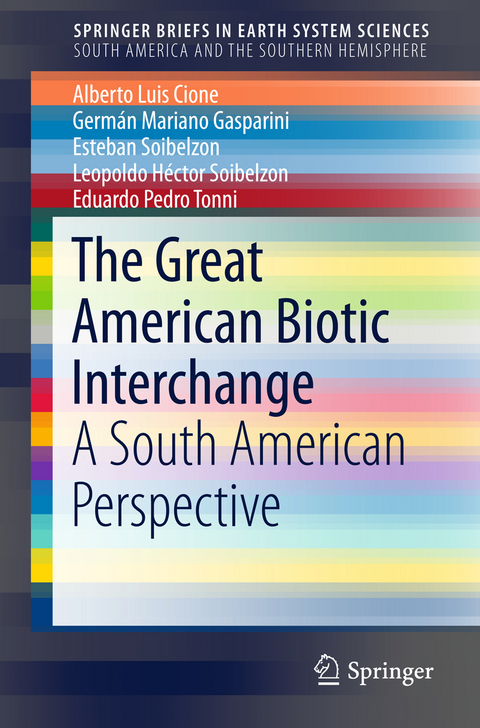
The Great American Biotic Interchange
Springer (Verlag)
978-94-017-9791-7 (ISBN)
All the authors are associated with the Department of Vertebrate Paleontology of the Museo de La Plata in Argentina. Alberto Luis Cione, Germán Mariano Gasparini and Esteban Soibelzon are members of Argentina's National Scientific and Technical Research Council (CONICET).
The history of the Great American Biotic Interchange concept.- Continents involved in the GABI.- Landbridges between previously isolated continents.- Chronology, Stratigraphy and Paleoclimatology of South America since Late Miocene to the Recent.- Objectives and hypothesis.- Methods.- Stratigraphic conceptual framework.- Taxonomic diversity: native, immigrant, and in situ differentiated taxa.- Paleoecology: body mass and diet estimations.- Analysis of Immigrant Mammal Fauna through the Diffferent Ages.- Huayquerian Age.- Montehermosan Age.- Chapadmalalan Age.- Marplatan Age.- Ensenadan Age.- Bonaerian Ag.- Lujanian Age.- Platan Age.- Discussion.- The GABI chronology and dynamics.- Integration of South American mammalian faunas: native and immigrant taxa coexisting.- Quaternary mammalian extinctions in South American Composition of recent mammalian fauna of South America.
| Reihe/Serie | SpringerBriefs in Earth System Sciences |
|---|---|
| Zusatzinfo | 28 Illustrations, color; 2 Illustrations, black and white; X, 97 p. 30 illus., 28 illus. in color. |
| Verlagsort | Dordrecht |
| Sprache | englisch |
| Maße | 155 x 235 mm |
| Themenwelt | Naturwissenschaften ► Biologie ► Evolution |
| Naturwissenschaften ► Geowissenschaften ► Geografie / Kartografie | |
| Naturwissenschaften ► Geowissenschaften ► Geologie | |
| Naturwissenschaften ► Geowissenschaften ► Mineralogie / Paläontologie | |
| Schlagworte | Great American Biotic Interchange (GABI) • Mammals Biostratigraphy • Panama Land Bridge • South America • South American land Mammal Ages (SALMA) |
| ISBN-10 | 94-017-9791-9 / 9401797919 |
| ISBN-13 | 978-94-017-9791-7 / 9789401797917 |
| Zustand | Neuware |
| Haben Sie eine Frage zum Produkt? |
aus dem Bereich


